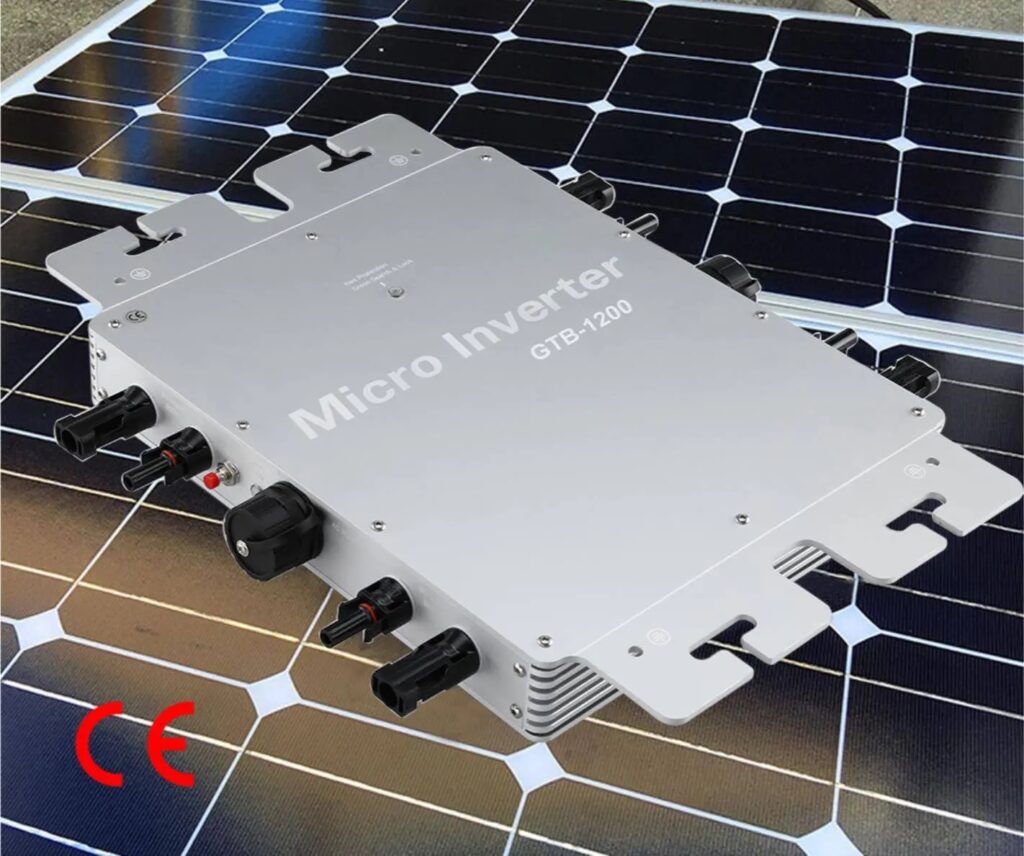A microinverter is a device used in solar photovoltaic (PV) systems to convert the direct current (DC) electricity generated by individual solar panels into alternating current (AC) electricity, which is the standard form of electricity used in homes and businesses. Unlike traditional string inverters that handle the output of multiple solar panels together, microinverters are designed to be installed on a per-panel basis, converting the DC output of each individual solar panel into AC electricity.
- Individual Panel Conversion: In a traditional solar PV system with a central string inverter, the DC electricity generated by multiple panels is combined into one string and then converted to AC by the central inverter. Microinverters, on the other hand, are installed on or near each solar panel, allowing for the conversion of DC to AC at the panel level.
- Optimal Energy Harvesting: Microinverters can optimize energy production because they allow each panel to perform independently. This means that shading or performance issues with one panel won’t impact the output of other panels, as is the case with string inverters.
- Monitoring and Maintenance: Microinverters often come with monitoring capabilities that allow you to track the performance of each individual solar panel in real-time. This can help identify any issues quickly and accurately, making maintenance more efficient.
- Safety: Microinverters typically have lower DC voltages than the high-voltage DC strings used in traditional systems. This can enhance the safety of installation, maintenance, and firefighting activities.
- System Scalability: Microinverters can be more easily expanded or modified over time. Adding more panels to the system doesn’t necessarily require adjustments to the inverter configuration, as each panel has its own microinverter.
- Mitigating Partial Shading Effects: When solar panels are connected in series (as in traditional string inverters), if one panel is shaded or underperforming, the entire string’s output can drop significantly. Microinverters mitigate this issue by ensuring that each panel’s performance isn’t tied to the others.
It’s important to note that microinverters can add some complexity and cost to a solar system due to the need for more individual components. However, the benefits in terms of energy production, system monitoring, and flexibility can often outweigh these considerations, especially in scenarios where shading, varying panel orientations, or space constraints are present.


